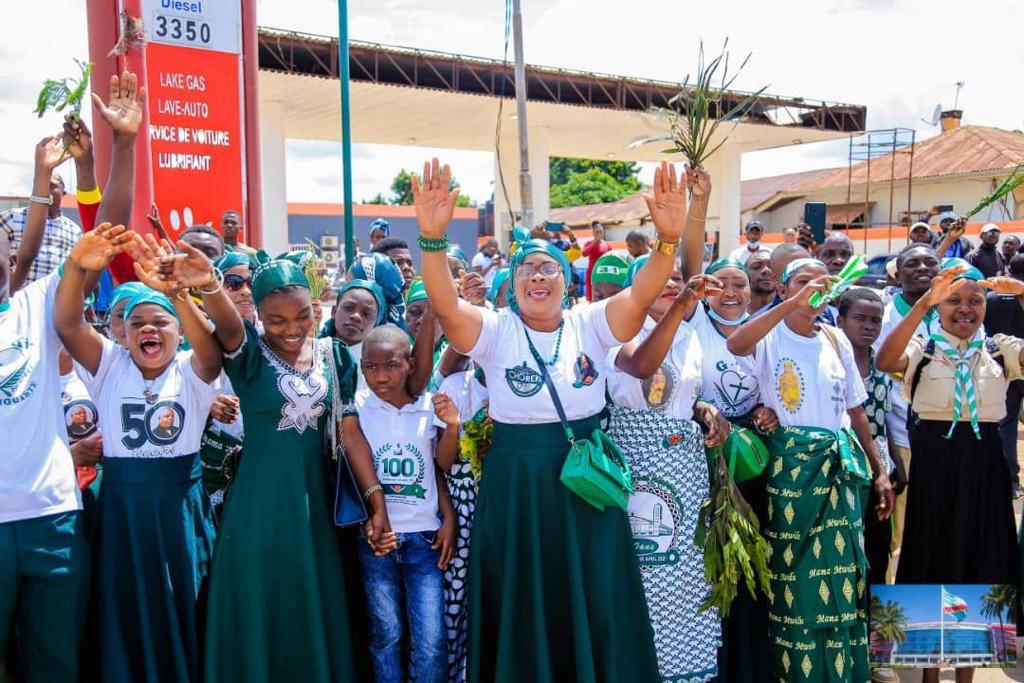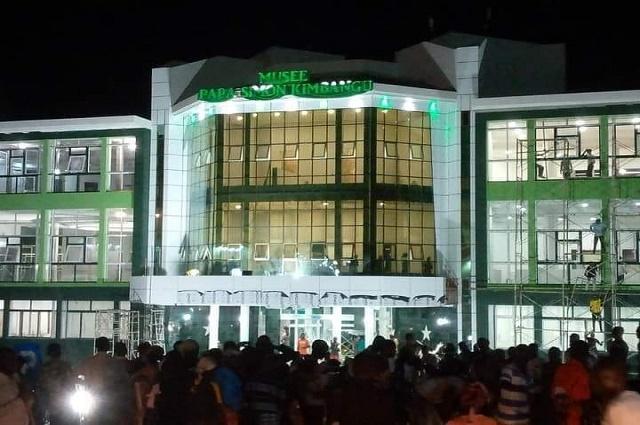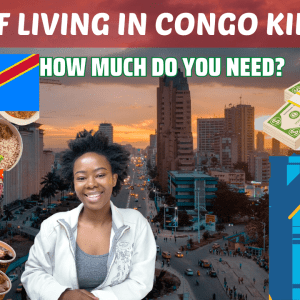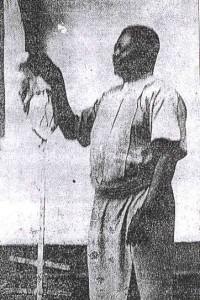In the 20th century, the Congo (now known as the Democratic Republic of the Congo) was under the colonial rule of King Leopold II.
Although the country was blessed with great natural wealth, it was also marked by terrible human suffering; this is when Simon Kimbangu was born.
The life of Simon Kimbangu
It was in this context that Simon Kimbangu was born, an ordinary man like you and me. Raised in a Christian family, he was educated by Baptist missionaries and worked as a carpenter until 1921, when he claimed to have received a divine revelation in a dream. He then claimed to have received a divine call to preach the Gospel.
Simon Kimbangu began to preach and performed miraculous acts, such as healing the sick, the blind, the lame, the deaf and lepers.
He raised the dead, predicted the future and mastered nature. He preached a message of hope and liberation for black people, who suffered from colonial exploitation and racism. Some of his followers considered him the son of God and called him Papa Simon or Ngunza (the envoy).
Simon Kimbangu attracted thousands of followers who witnessed his miraculous powers. He preached a message of hope for black liberation, denounced the injustice and violence of the colonial system and warned his followers to resist.
He began to affirm the dignity and identity of African culture and spirituality while rejecting some of the aspects of Western Christianity that he considered oppressive or irrelevant.
Simon Kimbangu’s popularity and influence alarmed colonial authorities who saw him as a threat to their power and order. They accused him of being a rebel leader and a sorcerer. They subsequently sent troops to arrest him and his followers, but they faced strong resistance from the local population.
After several confrontations, Simon Kimbangu voluntarily surrendered in October 1921, hoping to avoid further bloodshed. He was tried by a military tribunal and sentenced to death. However, his sentence was commuted to life imprisonment by the Belgian king who feared that his execution would make him a martyr. Simon Kimbangu was transferred to a prison in Elisabethville (now Lubumbashi), where he spent the rest of his life in difficult conditions until his death in 1951 at the age of 64.
The legacy of Simon Kimbangu and his Black Christian movement
Simon Kimbangu is considered one of the most influential prophets in sub-Saharan Africa. His movement survived his death and grew to become one of the largest and most influential African-initiated churches in the world.
After Simon Kimbangu’s death, his followers continued to worship their leader by practising his teachings and rituals, despite persecution and repression by colonial authorities. Gatherings and publications were banned, property was confiscated, and leaders were arrested. Despite these difficulties, Simon Kimbangu’s movement survived and evolved over time.
In 1959, Joseph Diangienda, Simon Kimbangu’s son, took over as spiritual leader of the movement and founded the Kimbanguist Church. This church has become one of the largest and most influential African-initiated churches in the world, with millions of members in Congo and other countries.
In addition to religious practice, the Kimbanguist Church has engaged in social and humanitarian work, building schools, hospitals, orphanages and cooperatives, as well as participating in interfaith dialogue and peace initiatives.
The Kimbanguist church has played an important role in Congolese nationalism and politics. It supported the independence movement led by Patrice Lumumba in 1960 and opposed the dictatorship of Mobutu Sese Seko from 1965 to 1997. However, the church has also suffered from internal divisions and conflicts between its leaders and factions.
Today, the Kimbanguist church is led by Simon Kimbangu Kiangani, the grandson of Simon Kimbangu. He faces various challenges and opportunities in leading his church into the future. Despite the obstacles, the Kimbanguist movement is a legacy that has survived the death of its founder and continues to grow and influence religious, social and political life in the Congo and beyond.
The movement inspired and supported the struggle for independence and democracy in Congo and other African countries. They challenged corrupt and violent post-colonial regimes and advocated for human rights and social justice. They used to participate in pan-African and anti-apartheid movements and showed solidarity with other oppressed peoples in the world.
Finally, the Kimbangu movement helped create a new society for blacks by fostering a sense of community and solidarity among their supporters and by providing social services and economic opportunities.
They promoted education, health, morality and ethics, gender equality and family values. They have also worked to improve the lives and well-being of their members and neighbours.
If you want to know more about Congolese history in general, we recommend you to follow us on your favourite social media platforms: Instagram (@congotalks243 and @yafelie), Twitter (@congotalks243), TikTok (@yafelie and @congotalks243), Facebook (@CongoTalks243) and LinkedIn (@CongoTalks243), and subscribe to our YouTube channel.
✅ How to support our works: PAYPAL: https://paypal.me/CongoTalks243
For business inquiries related to CongoTalks243, you can reach out at info@congotalks243.com.








